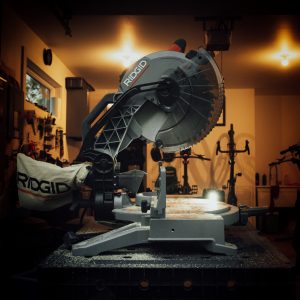Table of Contents
Introduction
A mitre saw is used to make perfect cuts of varying angles. To know more about mitre saws check out What is a miter saw and What is the difference between a chop saw and a mitre saw.
A sliding mitre saw has rails that allow you to cut across a large piece of material by sliding it back and forth. The forward and backward movement increases the capacity of the saw to cut across a thick material.
Finding the right size of sliding mitre saw can be a little bit of a problem when you have a variety to choose from. Getting the right and suitable one that would get the intended job done quickly would be your top priority. We show what size of size sliding mitre saw to use with its advantage and disadvantage.
What Size Sliding Mitre Saw Do I Need?
To know what size of a sliding mitre saw to use for your required project, could be whole trouble if you don’t know what size is required to get your project going. Mitre saws come in a range and variety of blade types and sizes; the most common, in commercial use is the 10-inch and the 12-inch blade size.
However, you must know the difference between each of the blade size before you make a purchase or use it for a project; to let you know what types of jobs are suitable for each’s use.
10-inch Mitre Saw
The kind and size of a job determine what size of a saw is needed. The 10-inch blade size is cheap and easy to handle. The cross-cut size of a 10-inch mitre saw is 5.5 inches cut two by 6. It is convenient and efficient for woodworking projects that are about 5 inches and below, this is because the smaller the surface area, the greater the pressure needed.
10-inch blade size is small and would exert a tremendous pressure while cutting through a small surface area, whereas a 12-inch blade wouldn’t do this quickly because it is bigger. A 10-inch is easy to store and handle because of its portable size.
12-inch Mitre Saw
The cross-cut size of a 12-inch mitre saw is 7.5 inches cut two by 8. It is advisable to cost-efficient to use it for projects that would require you to cut through 6 inches and above. Like the 10-inch blade size which is needed to cut through materials of a small surface area, you should use a 12-inch blade to cut through materials of a larger surface area as it would do the job that is required. If you want deep and wide cuts, your best option would be a 12-inch blade size.
Conclusion
The problem that comes with not knowing what size of sliding mitre to use can be time and energy-consuming. However, by now, you should have a clear picture of when to use a particular size of a mitre saw‘ for your project and help get the job done faster.

